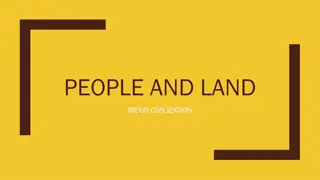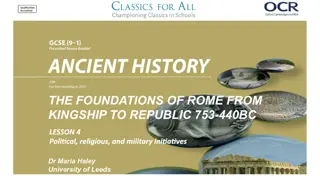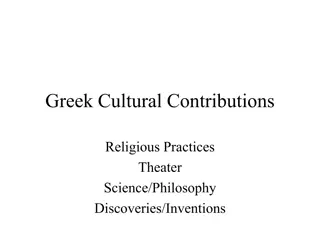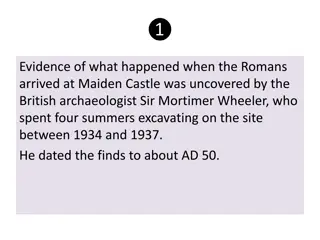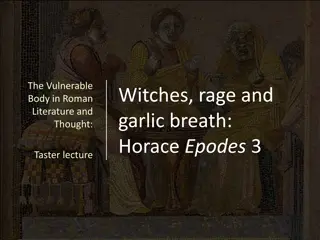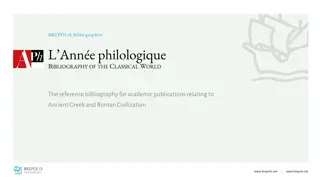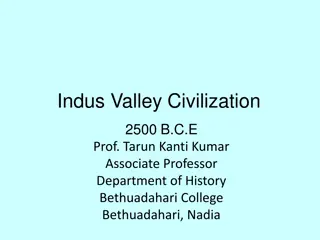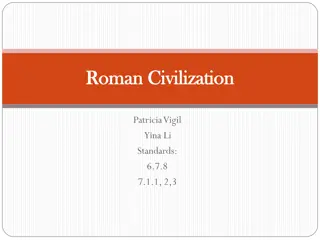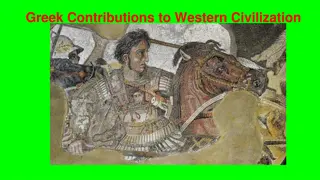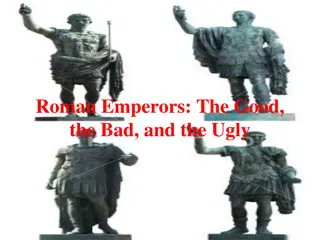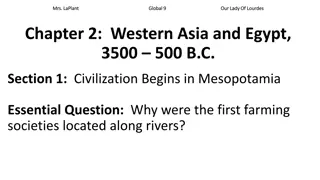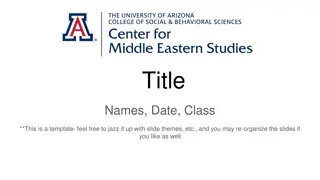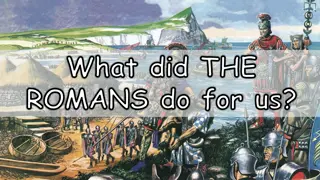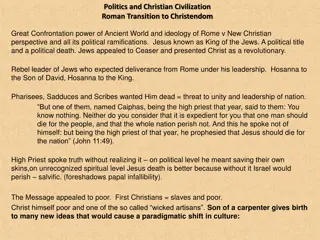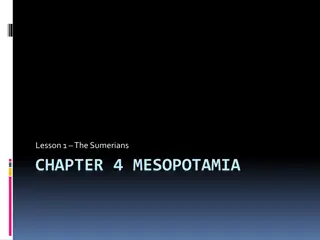Exploring Roman Civilization: Contributions and Daily Life
Delve into the intriguing world of ancient Rome through a visual journey showcasing the impact of Roman civilization. Discover the architecture, art, infrastructure like roads and drains, calendar systems, coins, and the luxurious baths they enjoyed. Uncover the influence of the Roman Empire on various aspects of society, from the rich attire to the pastimes like gladiator fights in amphitheatres.
Uploaded on Sep 12, 2024 | 0 Views
Download Presentation

Please find below an Image/Link to download the presentation.
The content on the website is provided AS IS for your information and personal use only. It may not be sold, licensed, or shared on other websites without obtaining consent from the author. Download presentation by click this link. If you encounter any issues during the download, it is possible that the publisher has removed the file from their server.
E N D
Presentation Transcript
BC: Before Jesus was born AD: After Jesus was born
What have What have the Romans the Romans ever done ever done for us??? for us???
Architecture Architecture
Art Art
Drains and Sewers Drains and Sewers
The Calendar The Calendar
Coins Coins
Heated Baths Heated Baths
Roads Roads
Towns Towns
Rich Roman man wearing a toga.
These men are wearing short tunics. Therefore they were members of the poorer classes
Can you tell which men are poor and which men are rich from this picture?
Amphitheatres The Roman amphitheatre was the centre of public entertainment in Rome, and all over the Roman Empire. People would go to the amphitheatre to see men fighting wild beasts or each other. These men were called gladiators. It was a cruel sport because someone was usually killed. The most famous amphitheatre was the Coliseum. You can still visit the Coliseum in Rome today.
Chariot Racing The stadium (or circus) was used for chariot-racing. A stadium had a long rectangular enclosure, curved at one end, with seats all around except at the end opposite the curve. Down the middle was the spine, which the chariots hurtled around, lap after lap, trying to cut in front of each other. Chariot-racing was a very popular sport all over the Roman Empire.
However chariot racing was also very dangerous When an accident occurred the chariot often fell to pieces in an instant and the driver was hurled out The most famous Roman stadium was the Circus Maximus


